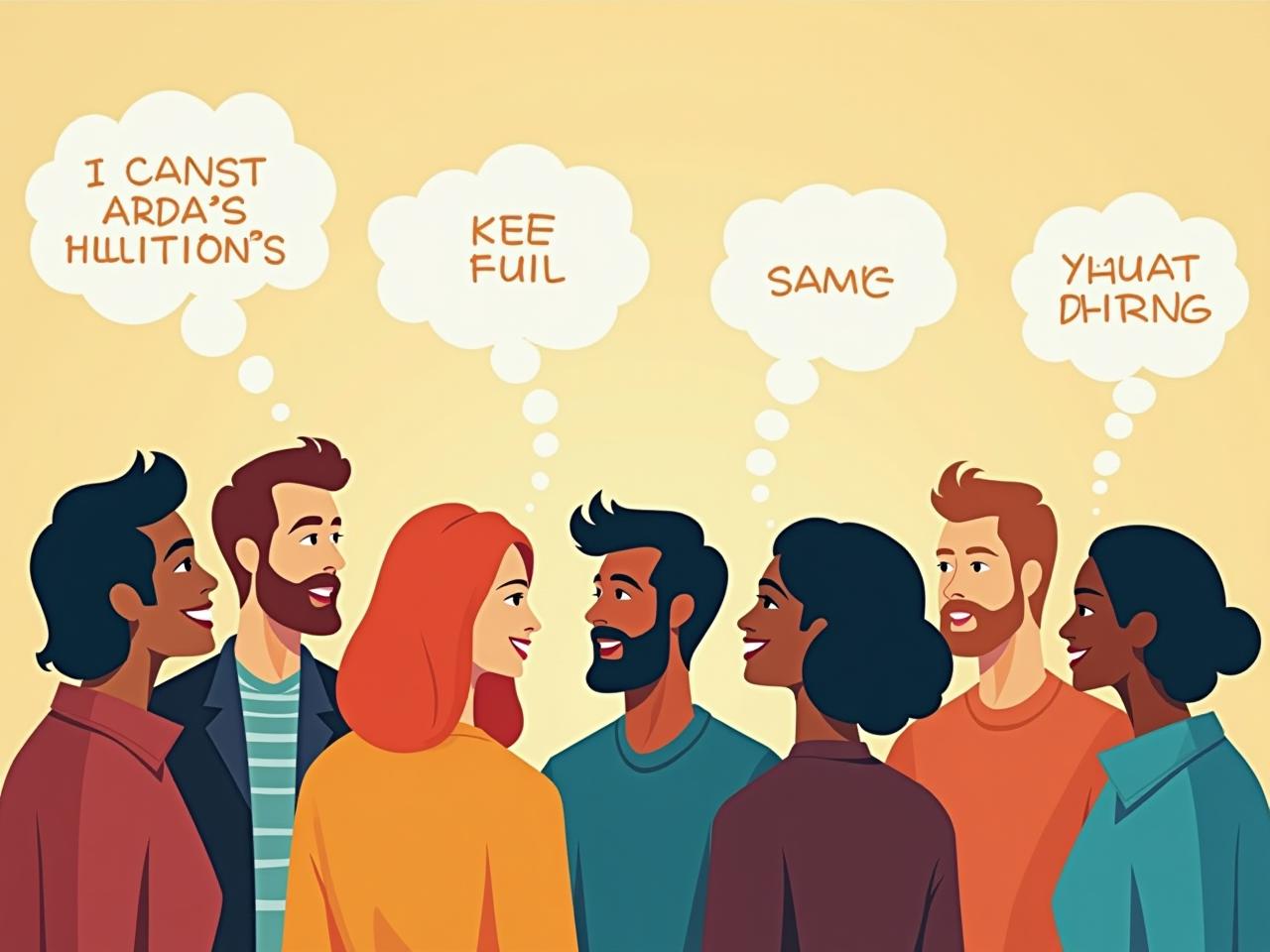Imagine this: You're in a meeting, pitching a fantastic idea. You're fired up, excited, and sharing all the potential benefits. Your colleague responds, "That's interesting." But instead of feeling encouraged, you feel deflated. Is she genuinely interested, or is she subtly dismissing your idea? Maybe, just maybe, it’s about communication style more than substance. This frustrating dance of misinterpretation happens all the time, creating unnecessary conflict and misunderstanding.
The root of this problem often lies in the differences in how men and women communicate, a fascinating topic explored in Deborah Tannen’s groundbreaking book, You Just Don't Understand. When I stumbled upon Tannen's insights, I discovered a simple yet profound truth: many communication breakdowns aren't about what we say, but how we say it, and how the other person interprets it. It's all about interpretation.
The Life-Changing Insight from "You Just Don't Understand"
"Communication isn't just about conveying information, it's about connection and building relationships."
Deborah Tannen’s central argument is that men and women often approach communication with different goals. Men often use communication to establish status and independence (what she calls "report-talk"), while women often use communication to foster connection and intimacy ("rapport-talk"). This difference in styles can lead to constant misinterpretations. Think of it like this: imagine two people speaking different dialects of the same language. They can both understand the basic words, but the nuances, the subtle inflections, the implicit meanings, are often lost in translation, leading to confusion and frustration. Tannen's work is deeply rooted in sociolinguistics, showing how societal expectations and learned behaviors shape our communication styles from a young age. She presents ample evidence from real-life conversations to support her claims.
> "Communication isn't just about conveying information, it's about connection and building relationships." – Deborah Tannen, You Just Don't Understand
This concept works because understanding the underlying motivations behind different communication styles allows us to adjust our own approach and better interpret the messages we receive. It's about recognizing that there are multiple valid ways to communicate and that empathy is key to bridging the gap.
Action Plan: 4 Simple Steps to Immediate Improvement
1. Listen Actively for Tone
Pay close attention to how someone is speaking, not just what they are saying. Is their tone warm and inviting, or more formal and direct? For example, if someone says, "That's an interesting idea" in a flat tone, it might indicate polite disagreement. Actively listen for verbal cues like pauses, changes in pitch, and speed to gain a deeper understanding of the speaker's intent.
Tip: Practice active listening by summarizing what the other person said before responding. This ensures you've understood their message correctly.
2. Recognize the "Report" vs. "Rapport" Dynamic
Identify whether the communication is focused on establishing status (report) or building connection (rapport). For instance, a man might dominate a conversation to display knowledge, while a woman might ask questions to encourage participation. Recognizing this dynamic helps you understand the underlying motive.
Tip: Reflect on your own communication style. Are you primarily focused on "report" or "rapport"? Try consciously adjusting your approach to meet the other person's needs.
3. Ask Clarifying Questions
When in doubt, don't assume! Ask clarifying questions to ensure you're interpreting the message correctly. For example, instead of getting defensive about "That's interesting," ask "What aspects of the idea do you find interesting?".
Tip: Frame your questions in a neutral and non-confrontational way to avoid putting the other person on the defensive.
4. Practice Empathy
Put yourself in the other person's shoes and try to understand their perspective. Consider their background, experiences, and communication style. For instance, if someone is direct and blunt, it might not be intended as rude but simply a reflection of their cultural norms.
Tip: Before reacting, take a moment to consider the other person's point of view. This will help you respond with greater understanding and compassion.
How I Applied the Method in My Life
I used to get incredibly frustrated with my partner's communication style. He's very direct and to the point, whereas I tend to be more indirect and expressive. This led to numerous misunderstandings and arguments. I would often misinterpret his directness as criticism, even when he was simply trying to be efficient.
After reading Tannen’s book, I started paying closer attention to his communication style. I realized that his directness wasn't meant to be hurtful; it was simply his way of communicating. I started asking clarifying questions instead of assuming the worst, and I tried to be more direct myself. The results were amazing. We had fewer arguments, and I felt much more understood.
> The most significant change came when I stopped taking his directness personally. Understanding that it was his default communication style allowed me to detach emotionally and respond more objectively.
3 Common Mistakes and How to Avoid Them
1. Assuming Malice
Instead of assuming the other person is trying to be hurtful, try to assume positive intent. People often communicate out of habit or cultural norms, not necessarily to cause harm.
Why people make the mistake: Our own insecurities and past experiences can lead us to interpret neutral or even positive statements as negative.
Solution: Give the benefit of the doubt. Assume the person has good intentions unless there's concrete evidence to the contrary.
2. Generalizing Gender
Instead of assuming all men or all women communicate in a certain way, recognize that individuals have unique communication styles. While gender can influence communication, it's not the sole determinant.
Why people make the mistake: Stereotypes are easy to fall back on, but they oversimplify complex human behavior.
Solution: Treat everyone as an individual and be open to observing their specific communication patterns.
3. Ignoring Nonverbal Cues
Instead of focusing solely on the words being spoken, pay attention to body language, tone of voice, and facial expressions. These nonverbal cues can often reveal more than the words themselves.
Why people make the mistake: We are often taught to focus on the literal meaning of words and can miss the subtle messages conveyed through nonverbal communication.
Solution: Practice observing and interpreting nonverbal cues. Watch videos of conversations and try to identify the emotions and intentions behind the words.
The Last Word: Start Today
Communication is the cornerstone of all relationships. By understanding the potential for misinterpretation and actively working to bridge the gap, you can create stronger, more fulfilling connections. Even implementing just 10% of the insights from You Just Don't Understand can dramatically improve your relationships, both personally and professionally. What small step can you take today to start decoding your conversations?
Frequently Asked Questions
Q: What if someone is genuinely trying to be hurtful, regardless of gender?
A: Set boundaries and communicate your needs clearly. It's important to assert yourself and not tolerate disrespectful behavior.
Q: How can I address gendered communication differences in the workplace?
A: Facilitate open discussions about communication styles and promote a culture of understanding and respect. Consider training sessions on effective communication for all employees.
Q: Is it always necessary to adapt to someone else's communication style?
A: No, it's a two-way street. Ideally, both parties should be willing to adapt and compromise to create a more effective and harmonious communication environment.
Q: Where can I learn more about Deborah Tannen’s work?
A: Start with "You Just Don't Understand," then explore her other books like "That's Not What I Meant!" and "Talking from 9 to 5."
This article was written by [Your Name], a communication specialist dedicated to helping individuals and organizations improve their interpersonal skills and foster better understanding.



